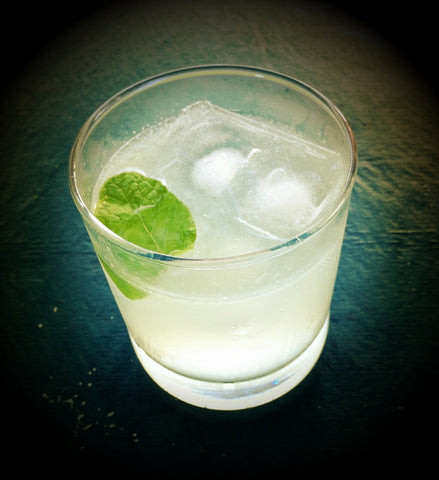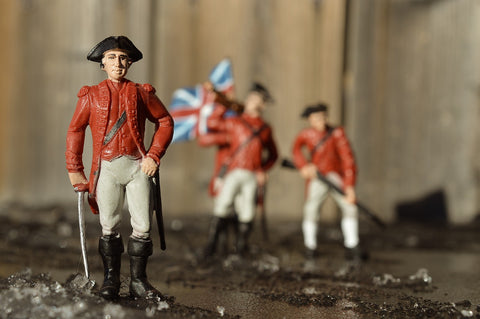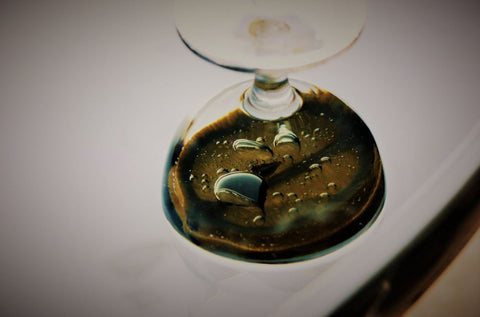
Before we explore a few garnishes for the beloved gin & tonic, let's put on our ascot ties and explore the history:
Tonic Beginnings
The gin and tonic drink is one of the most British and regal drinks the world has ever known.
Gin's past is fascinating and when you combine that with tonic, you have one of the most interesting alcohol mixer combinations in history. Tonic has played a role in starting wars, ending wars, and preventing disease.
It all started when the Incas generously gave the Countess of Chinchon of Spain a medicine from the bark of the Quinquina tree.
The countess had been suffering from Malaria. The Medicinal bark cured her. The tribe had used this bark to treat all kinds of human ills like cancer, stomach issues, and fevers.
Popularity Rises
The popularity of the magical bark from what was later to be known as the Cinchona tree exploded when the British East India Company started including the bark from the trees as an ingredient in their many cocktails.
Supply could not keep up with demand, so many trees were cut down as the bark became a hot commodity in Europe.
Many plots were concocted to steal the tree's seeds and bring them back to Europe. The European market would pay top dollar for a forest of these outstanding trees with this "magic" bark.
A few plots were stopped and some even resulted in death. This was the case when a man who used to live in Peru, Charles Ledger, tried to smuggle seeds out of the country and ended up being responsible for the death of an accomplice in the plot.
The Cinchona seeds eventually made their way to Java by way of the Dutch. Java became the primary grower of these great trees and benefited from them until the Japanese invaded Indonesia during World War II.
The Japanese invasion put Allied soldiers' lives in jeopardy when access to quinine became scarce. Many soldiers died until a synthetic version of the quinine was created.
The new synthetic version continued to be produced well after the war had ended and now the world did not have to rely on the Cinchona tree.
How pure is the quinine that you're drinking? Most brands found in local stores are using the fake kind, but there are many brands that are creating their tonic water from true, natural sources. So keep looking for the best tonic for gin and tonic.
The Birth of Gin

It's a single berry that we need to thank for the wonderful taste of gin. The Juniper is the berry that makes up the core ingredient in gin. The French word for Juniper is genièvre, so this is where the word "gin" later came from after the British got their hands on it.
Even though our healthcare science has determined that gin has little to offer outside of drinking enjoyment, it was believed that monks in Italy were working with juniper berries as a cure for physical human ailments.
During this process, they managed to stumble on a damn tasty beverage.
Juniper, coriander, and anise were common natural cures believed to stop basic physical pains and diseases in Holland. Many say that a dutch doctor named Franciscus Sylvius was the first to create would be known as gin today.
The Gin King
One could say that the true father of gin would be England's King William III who loved the spirit so much that he named it the official drink of his court.
Gin became a loose currency in England as more and more civilians were encouraged to make their own distilled spirits like gin.
During this time, beer took a side position to gin as there was more gin flowing in England than brew. William may be the sole reason that the spirit is best known as one of the most important British alcohols today.
To slow down rampant gin drinking throughout England, a tax was placed on the drink. As you can imagine this led to unhappy citizens who began to complain by rioting in the streets.
The tax was later lowered to appease the masses and create fair competition with beer houses.
For those who may have thought "Dutch courage" was a derogatory term, you'll be happy to know that it was the British soldiers in Holland that would drink before going into battle and not the dutch themselves.
The drink was a staple during the long and tumultuous Thirty Year's War.
So who created the gin and tonic? No one knows officially, but a guess would be somewhere in England as amazing gins like Tangueray, Gordon's, and Beefeater are some of the best dry gins being produced today.
The Gin And Tonic Comes Together
Thank the British soldiers who were suffering from Malaria in India around the early nineteenth century for making the gin and tonic a lifesaver.
It was that magical bark, Cinchona, that was reducing the fever for soldiers. It was later found that it was the alkaloid quinine that was the basis for the bark's success in helping the soldiers.
Gin on its own proved to be a powerful cure for patient's pain, so it was combined with quinine which was painful to digest on its own.
Later, soda water, lime juice, and sugar were introduced to quinine to help the taste, and the modern gin and tonic were born.
The world would have to wait until the 1920s to enjoy true tonic water as we know it today. It took years for manufacturers to catch on that tonic water could be marketed on its own as a full-fledged cocktail mixer to be purchased.
Let's raise a glass to those who came before us for such a refreshing and elegant drink.
Gin And Tonic Garnish ideas:
Pink Grapefruit
Rose petal and cucumber
Orange
Mint and strawberry
Lavender and lemon
Lemon and thyme
Apple and juniper
Strawberry and basil
Lime and ginger
Rosemary and black pepper
Capsicum and basil

